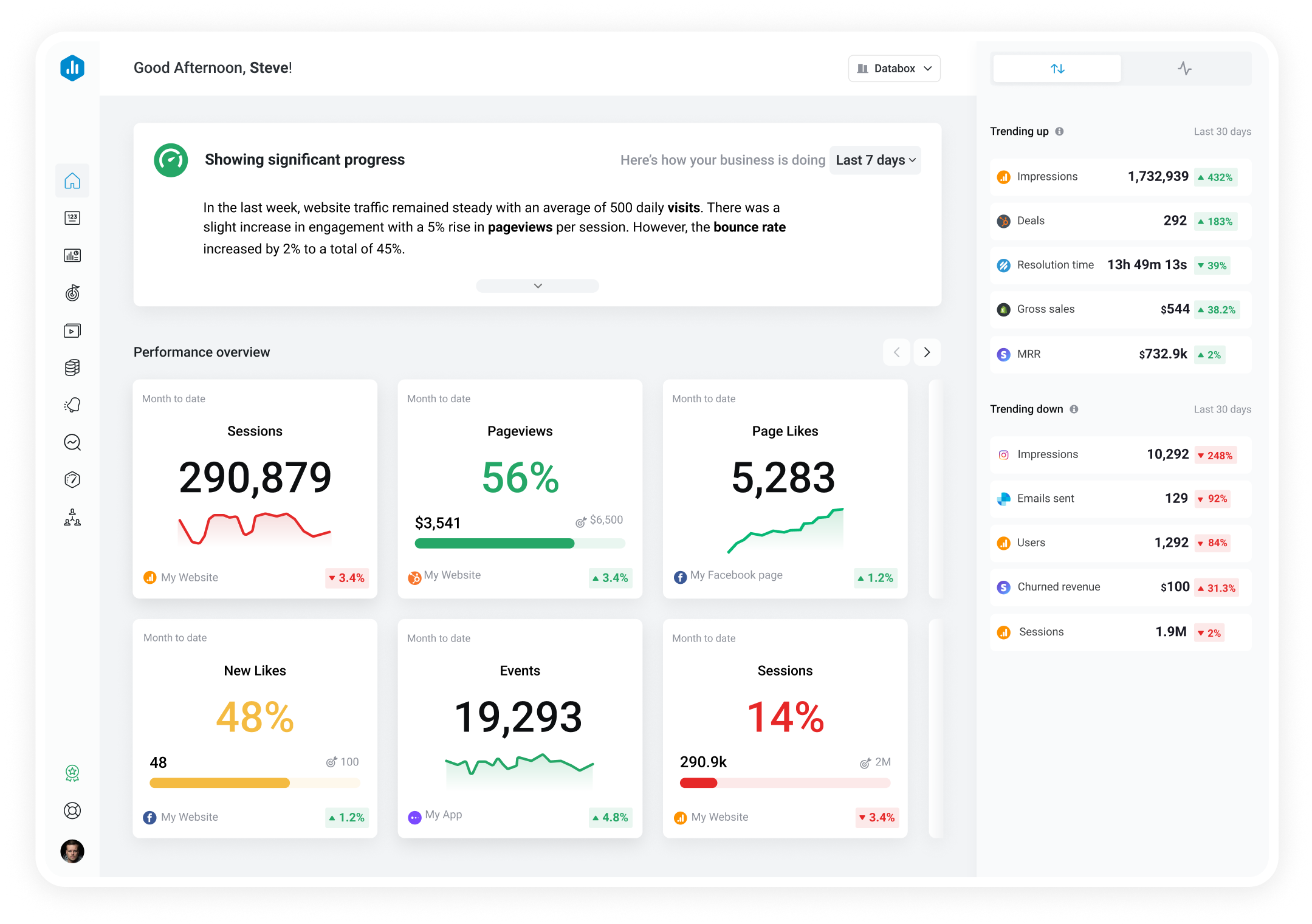Track all of your key business metrics from one screen
GET STARTED
 Shopify
New vs returning customers
Shopify
New vs returning customers Equates to product Selling Price x Ordered Quantity during the specified Date Range split up by New vs Returning Customers.
With Databox you can track all your metrics from various data sources in one place.
Databox is a business analytics software that allows you to track and visualize your most important metrics from any data source in one centralized platform.
To track New vs returning customers using Databox, follow these steps:
 Goals
Goals Scorecards
Scorecards Metric Digest
Metric Digest Metric Builder
Metric Builder Data Calculations
Data Calculations Performance Screen
Performance ScreenShopify metrics in Databox are Event type metrics and Databox obtains the relevant data based on calculations of data for the specific event entity, such as an Order. Each entity received via the API will be stored in our database as a separate entry and each entry will have its own timestamp associated with it – the moment the event occurred. As a consequence, in cases when the Order that occurred in the past is edited, changed, or deleted in the Shopify User Interface after it has already been completed and synced to Databox, Databox cannot report on such historical data changes, which will result in discrepancies when data from Shopify is compared to values in Databox for the past Date Range.
Shopify can distinguish between returning and new customers differently in their User Interface than Databox can from their API, therefore the data discrepancy might be present for this metric in the following case.
Databox obtains data on the current state of a customer, so if the customer had never placed an order before and then placed two separate orders one after the other in the selected Date Range, Databox sees it as a ‘Returning’ customer with value 2 (Orders) present in the API. This would then indicate that both these orders were made from a ‘Returning’ customer, which is not technically correct since the first order made by the customer should be counted as made by a ‘New’ customer.
Hence, in Databox the value for the ‘Returning’ dimension will be higher and the value for the ‘New’ dimension lower than in the Shopify User Interface when the new customer is making multiple orders right after their first purchase.
‘Gross Sales’ and ‘Discounts’ standard and dimensional metrics will be off by some cents on some days if ‘taxes included’ is checked in the connected Shopify account.
The reason for this, using the Discounts metric example, is that Databox has to calculate the actual discount from the values it gets from the API by subtracting the tax from it. This is done by calculating the tax with the tax rate and the discounted amount, which often yields decimal numbers, but Shopify has its own way of rounding these numbers in the User Interface. As a consequence, when observed with Daily granularity, some days may have discrepancies by a few cents due to rounding.
Affected metrics:
Discounts
˪ by Billing City
˪ by Billing Country
Gross Sales
˪ by Billing City
˪ by Billing Country
˪ by Top Products
˪ by New vs Returning Customers
˪ by Product Vendor
